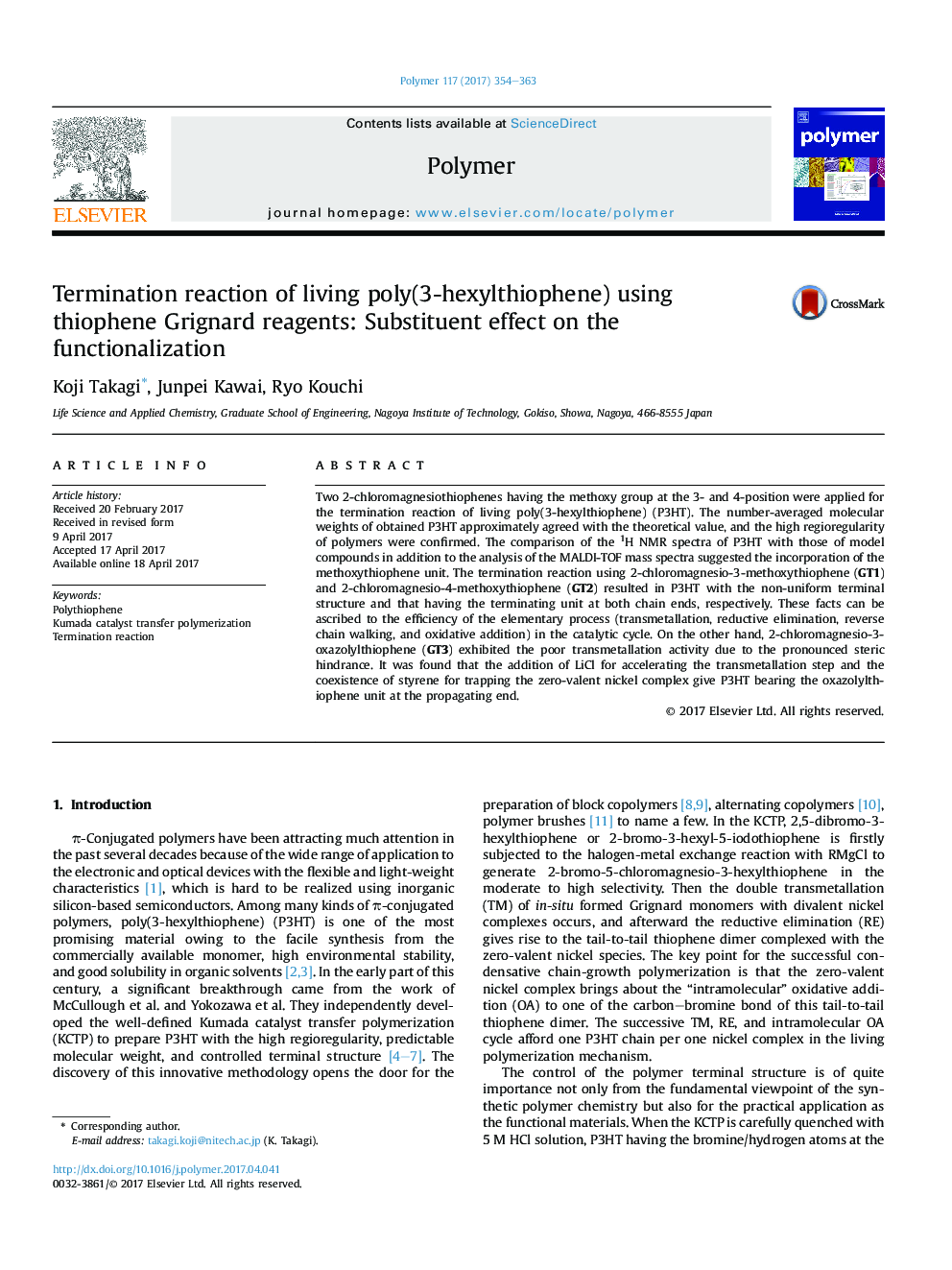| Article ID | Journal | Published Year | Pages | File Type |
|---|---|---|---|---|
| 5178334 | Polymer | 2017 | 10 Pages |
â¢Three thiophene Grignard reagents were applied for the termination reaction of living poly(3-hexylthiophene) (P3HT).â¢The bidentate phosphine ligand had little influence on the end-functionalization.â¢The position of the methoxy group on the thiophene ring significantly affects the end-functionalization.â¢The addition of LiCl and styrene was important to obtain P3HT with oxazolylthiophene solely at the propagating end.
Two 2-chloromagnesiothiophenes having the methoxy group at the 3- and 4-position were applied for the termination reaction of living poly(3-hexylthiophene) (P3HT). The number-averaged molecular weights of obtained P3HT approximately agreed with the theoretical value, and the high regioregularity of polymers were confirmed. The comparison of the 1H NMR spectra of P3HT with those of model compounds in addition to the analysis of the MALDI-TOF mass spectra suggested the incorporation of the methoxythiophene unit. The termination reaction using 2-chloromagnesio-3-methoxythiophene (GT1) and 2-chloromagnesio-4-methoxythiophene (GT2) resulted in P3HT with the non-uniform terminal structure and that having the terminating unit at both chain ends, respectively. These facts can be ascribed to the efficiency of the elementary process (transmetallation, reductive elimination, reverse chain walking, and oxidative addition) in the catalytic cycle. On the other hand, 2-chloromagnesio-3-oxazolylthiophene (GT3) exhibited the poor transmetallation activity due to the pronounced steric hindrance. It was found that the addition of LiCl for accelerating the transmetallation step and the coexistence of styrene for trapping the zero-valent nickel complex give P3HT bearing the oxazolylthiophene unit at the propagating end.
Graphical abstractDownload high-res image (147KB)Download full-size image
